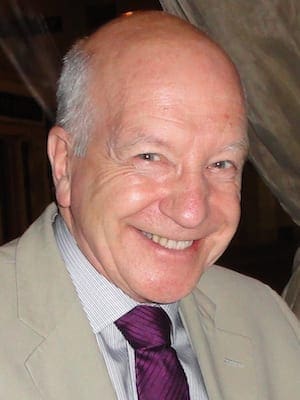The story of Jesus in the house of Martha and Mary (Luke 10:38-42) is a short, but rich, narrative about two sides of Christian discipleship.
You know the one – Martha banging pots, rattling dishes and cutlery, checking oven, swearing at the beeping microwave, piling everything in the dishwasher, trying to set a table while stirring a sauce, checking the recipe online, and Mary sitting at Jesus’ feet.
It isn’t fair. Even less fair when Martha complains to Jesus and gets a telling-off for getting so worked up. What’s that about?
Martha is the one who welcomes and invites Jesus, assuming that for such an important guest everyone will muck in and get on with what needs to be done.
Usually Mary and Martha are a team, but this time Mary is sitting, all ears on what Jesus is saying.
One of my favorite paintings is Vermeer’s “Christ in the House of Martha and Mary.” It’s in the National Gallery in Edinburgh, Scotland, and it’s now a regular stopping place if I’m in the city and it can possibly be done.
This painting sent me chasing for other visual interpretations of this story and there are a lot.
And they all tell the same story, but often with variations of how the scene is interpreted that elicit a variety of questions.
Is Jesus annoyed or gentle? Is Martha criticized or consoled? Is Mary lazy or is she doing the right thing? Is conversation more important than food on the table when it comes to hospitality for a hungry guest?
Does Martha miss the point? Does Jesus overlook Martha’s practical kindness or indulge Mary’s fascination with the radical teacher from Nazareth?
How has Mary chosen the better part and the one thing necessary? Does that mean that all those practical souls, whose kindness and friendship are expressed through their own nature as doers of the word, are to be told what they are doing isn’t the way to love God?
As if those who pray and read the Bible are more in line with what God wants than the person who bakes the bread, drops in with the casserole, misses the prayer meeting to take someone for a hospital appointment?
Yes, I know. Mary was listening to the word, and Martha was clattering in the kitchen. No amount of working, doing, activity is a substitute for prayer, devotion and looking after your soul.
But Martha, if she ever gets a fair hearing, might want to say, “Well no amount of praying and Bible study and worship songs are going to feed the proper hunger of the body – give us this day our daily bread is, for a baker, a command to use gift and energy in feeding others.”
The word “activism” is a good put-down word, usually used by those who want to be super-spiritual and dismiss the spirituality of those who like Bezalel in Exodus 31 was gifted by the Spirit with the practicalities of hand and mind to get the job done.
Annette Everett created a beautiful statue of Martha and Mary standing together, back to back – the sculptor’s way of saying that contemplation and action, listening and doing, being with Jesus and working for Jesus, are both required in the model disciple.
This and Vermeer’s painting are interpretations in which Martha isn’t put down but helped to see that all the effort in the world isn’t a substitute for attentive listening to what the guest actually wants, needs and expects.
Hospitality is not to foist the host’s agenda-driven approach to making the guest feel welcome; it is to pay attention to what the guest says, to offer first the gift of presence and that precious time needed to get a good meal on the table.
There is a rich and varied tradition of how this story has been used in the church down the centuries, across the world in different cultures, and often as a co-opted script to put women in their place.
That’s another story, but reader beware and be aware: Luke, in telling this story, has Mary doing what a man does and a woman is never expected to do in Jesus’ time.
And Martha’s activism (a word too often used in a pejorative dismissal of people’s hard work) is described as “diakonia” – ministry, service.
Together, these two women contain the rich diversities of Christian ministry and devotion to God, the love of neighbor and God, the practical kindness that prepares food and the attentive listening that receives the gift the guest brings.
 James Gordon is part-time minister of Montrose Baptist Church in Angus, Scotland, and the former principal of the Scottish Baptist College. He is on the advisory board of the Centre for Ministry Studies, University of Aberdeen and is honorary lecturer in the School of Divinity, History and Philosophy. A version of this article first appeared on his blog, Living Wittily, and is used with permission.
James Gordon is part-time minister of Montrose Baptist Church in Angus, Scotland, and the former principal of the Scottish Baptist College. He is on the advisory board of the Centre for Ministry Studies, University of Aberdeen and is honorary lecturer in the School of Divinity, History and Philosophy. A version of this article first appeared on his blog, Living Wittily, and is used with permission.
Part-time minister of Montrose Baptist Church in Angus, Scotland, and the former principal of the Scottish Baptist College. He is on the advisory board of the Centre for Ministry Studies, University of Aberdeen, and is honorary lecturer in the School of Divinity, History and Philosophy.

